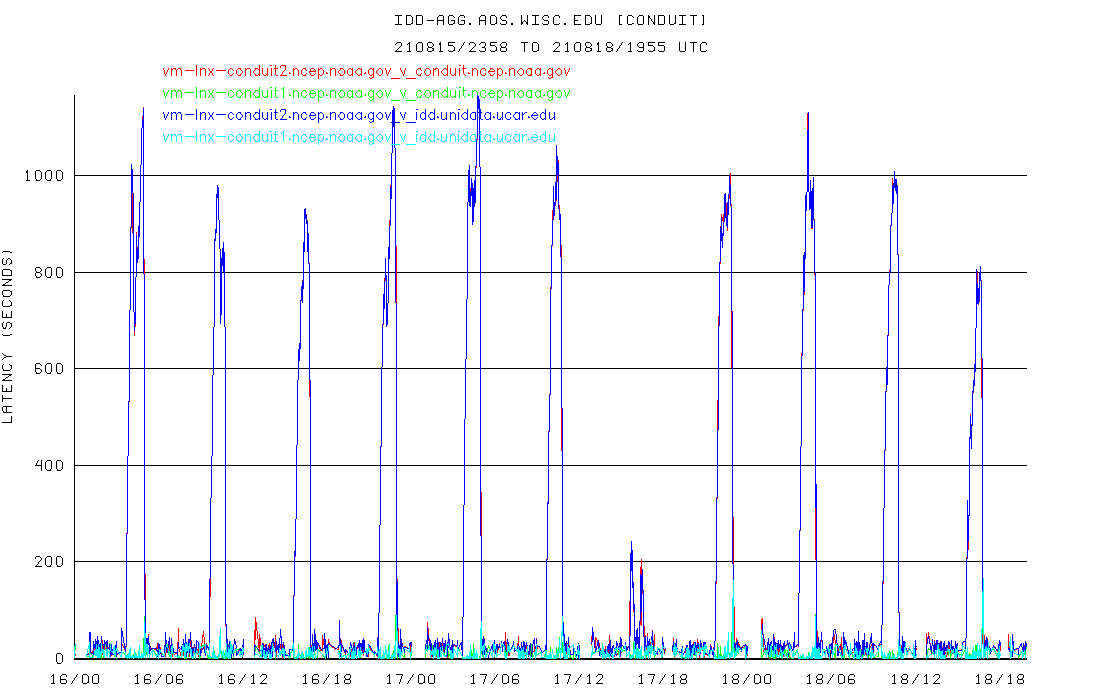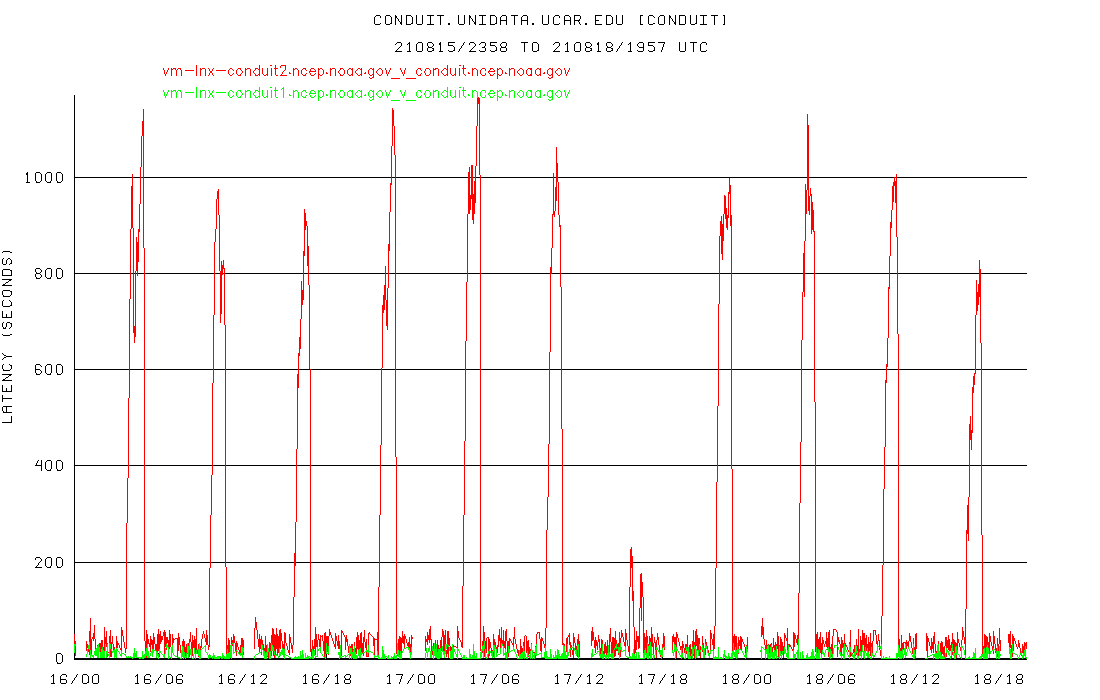Dear Anne, Dustin and all,
Recently we have noticed fairly high latencies on the CONDUIT ldm data feed
originating from the machine vm-lnx-conduit2.ncep.noaa.gov. The feed
originating from vm-lnx-conduit1.ncep.noaa.gov does not have the high
latencies. Unidata and other top level feeds are seeing similar high latencies
from vm-lnx-conduit2.ncep.noaa.gov.
Here are some graphs showing the latencies that I'm seeing:
>From
>https://rtstats.unidata.ucar.edu/cgi-bin/rtstats/iddstats_nc?CONDUIT+idd-agg.aos.wisc.edu
> - latencies for CONDUIT data arriving at our UW-Madison AOS ingest machine
[cid:cb4fda71-be88-450e-bf39-4346eb77ba50]
>From
>https://rtstats.unidata.ucar.edu/cgi-bin/rtstats/siteindex?conduit.unidata.ucar.edu
> (latencies at Unidata)
[cid:50b9a476-503f-4e75-b22b-4bc99eff3cdc]
At least here at UW-Madison, these latencies are causing us to lose some data
during the large GFS/GEFS periods.
Any idea what might be causing this?
Pete
<http://www.weather.com/tv/shows/wx-geeks/video/the-incredible-shrinking-cold-pool>-----
Pete Pokrandt - Systems Programmer
UW-Madison Dept of Atmospheric and Oceanic Sciences
608-262-3086 - poker@xxxxxxxxxxxx




